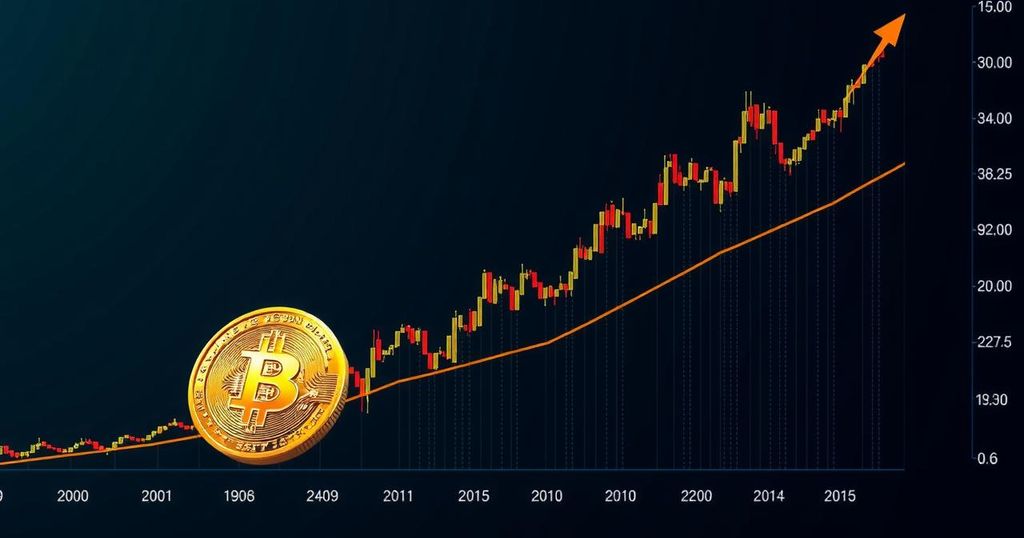Bitcoin’s Price Surge: Understanding the Factors Behind the Rally
Bitcoin’s recent price surge can be attributed to positive employment data in the U.S., increased interest in tech stocks, and substantial capital inflows into Bitcoin ETFs. These elements have collectively enhanced investor confidence and diversified interest in cryptocurrencies.
Bitcoin is once again capturing the market’s interest with a notable surge in its price, prompting enthusiasm among investors and analysts alike. This upward trajectory can be attributed to several intertwining economic factors, such as improved employment statistics in the United States and a surge in investments via Exchange-Traded Funds (ETFs). A closer examination reveals the critical elements driving this resurgence. Firstly, the recovery observed in the American labor market has fostered optimism, which is tangibly reflected in the price of Bitcoin. Recent reports from the U.S. Department of Labor indicate a decrease of 15,000 in new unemployment claims for the week ending October 19. Although this may appear modest, it signifies a robust job market, likely leading to expectations of interest rate cuts by the Federal Reserve. Such conditions typically rekindle investor appetites for riskier assets, including cryptocurrencies. Simultaneously, there is a renewed interest in technology stocks, with industry leaders like Tesla exceeding performance expectations. Notably, Tesla has projected a potential revenue increase of 30% by 2025, surpassing many analysts’ projections. This positive outlook for tech stocks directly influences Bitcoin’s value, as historically, there has been a strong correlation between the two, particularly when investors exhibit a more optimistic risk profile. Furthermore, Bitcoin ETFs have emerged as a pivotal factor in the current market dynamics. Significant net inflows, particularly through BlackRock’s iShares Bitcoin product, have injected $192 million into the Bitcoin marketplace. This influx stands in stark contrast to the substantial outflows experienced by competing ETFs, highlighting the dramatic impact capital flow can have on Bitcoin’s price. These funds not only stimulate market activity but also diminish concerns surrounding potential price stagnation. Parallel to this, the profitability reported by major tech firms reinforces the favorable climate surrounding Bitcoin. For instance, SK Hynix, a supplier to Nvidia, has reported increased profits, spurred by rising demand associated with artificial intelligence. The resurgence within the tech sector bolsters investor confidence in sectors related to digital asset investments, naturally encompassing Bitcoin. Lastly, the correlation between Bitcoin and technology stocks is quite pronounced, with a 50-day correlation exceeding 80% in October. While this relationship can fluctuate, strong alignments often occur during periods driven by shared factors such as liquidity flows or positivo economic indicators. As tech stocks thrive, Bitcoin exhibits a parallel rise, fueled by the underlying dynamics of the market.
Bitcoin’s fluctuating value often mirrors broader economic trends and market sentiments, making it a barometer for investor confidence in both the digital and traditional financial landscapes. The recent surge in Bitcoin’s price highlights the interplay of multiple factors, including employment data and technology sector performance, which play pivotal roles in shaping market trends.
In conclusion, Bitcoin is experiencing a notable resurgence, driven by an improving economic landscape in the United States, particularly with employment figures and a favorable sentiment in the technology sector. The significant capital inflow into Bitcoin ETFs, coupled with positive news from the tech industry, has enhanced Bitcoin’s allure as an investment. As these favorable conditions persist, Bitcoin’s price may continue to ascend, underscoring its capacity to reflect broader economic expectations beyond mere speculation.
Original Source: www.cointribune.com








Post Comment